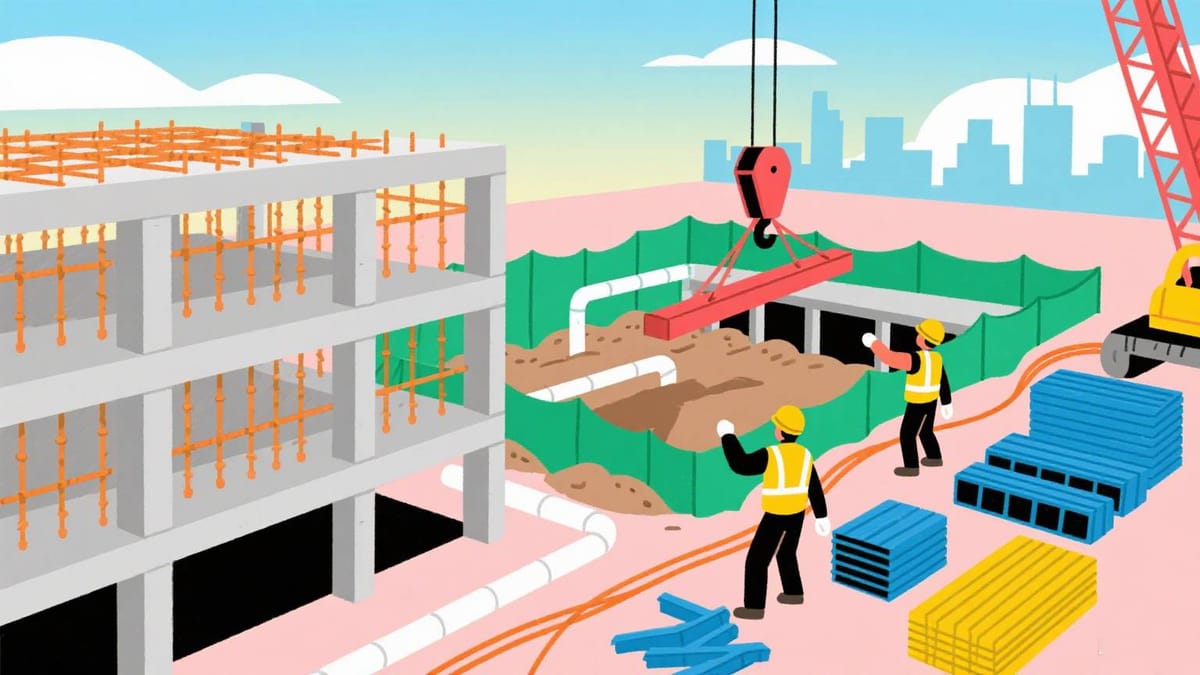Starting a hotel development project is exciting but also pretty overwhelming. For hotel managers and investors, understanding the money side is the first step to success. So, how much does it actually cost to build a hotel? There’s no single answer. The cost can range from a few million dollars for a basic motel to over $100 million for a luxury resort. This guide breaks down the main factors that affect hotel construction costs and gives you a simple framework for planning your finances smartly.
What drives Hotel Construction Cost
The total cost to build a hotel isn't just about bricks and mortar. It’s a complex mix of "hard" and "soft" costs, along with land acquisition and operational setup expenses. Knowing these components is crucial for creating an accurate budget.
Hard Costs: The Tangible Price of Construction
These are the direct costs associated with physical construction. They typically represent the largest portion of the budget, often accounting for 60% to 70% of the total project.
- Materials and Labor: This includes everything from the foundation and structural steel to roofing, drywall, and interior finishes. Labor costs for electricians, plumbers, masons, and other skilled trades are a major component.
- Site Work: Costs for site preparation, including grading, excavation, and the installation of utilities like water, sewer, and electrical lines.
- Building Systems: The price of installing HVAC, plumbing, electrical, and fire suppression systems. These are essential for a functional, safe, and comfortable building.
Soft Costs: The Invisible but Essential Expenses
Soft costs are the non-construction expenses that are critical to the project's success. They can make up 20% or more of the total budget.
- Design and Professional Fees: This includes fees for architects, engineers, interior designers, and project management consultants. Their expertise is vital for a well-planned and compliant building.
- Permits and Legal Fees: Securing permits, licenses, and conducting environmental impact studies can be a significant expense. Legal fees for contracts and real estate transactions are also part of this category.
- Insurance and Taxes: Builder’s risk insurance, liability insurance, and various taxes and fees need to be factored in from the start.
Beyond the Building: Other Key Financial Considerations
A hotel isn’t just an empty building – it needs everything inside to welcome guests. These costs are often overlooked, but they’re key to opening smoothly.
- Buying the Land: The land itself is a big factor. In big cities, it might eat up 9% to 14% of your total budget. Out in the country, it usually takes a smaller slice.
- Furniture, Fixtures, and Equipment (FF&E): This covers all the stuff inside: beds, chairs, lamps, kitchen equipment, front desk computers, TVs, and more. Depending on how fancy the hotel is, this can add another 10% to 15% to your total cost.
- Money for Surprises & Startup: It’s smart to set aside extra cash. First, for unexpected problems during construction. Second, to cover early running costs like staff pay, marketing, and supplies until the hotel starts making money.
What Drives Hotel Construction Costs Up or Down?
Understanding the average cost per room or per square foot is useful, but a hotel manager must look deeper. Several key factors can dramatically alter the final price.
Location
The geographical location is perhaps the most significant determinant of hotel construction cost.
- Urban vs. Rural: Building in a major city like New York or London is far more expensive than in a rural or suburban area. Land prices are higher, labor costs are greater, and building regulations are often more stringent.
- Regional Differences: Construction costs vary by country and even by state or province. For instance, the cost of materials and labor in a high-demand market in the U.S. will differ from those in a less developed region.
Hotel Class and Amenities
The desired star rating of your hotel directly impacts the cost. A basic two-star motel has very different cost requirements than a five-star luxury resort.
- Room Size: Standard rooms are typically 300-350 square feet. A luxury hotel, however, may feature larger rooms or suites, which drives up the cost per key.
- On-site Facilities: Adding a restaurant, spa, pool, or conference center can significantly increase the total hotel construction cost. A high-end restaurant, for example, could add hundreds of dollars per square foot to that part of the building.
Design and Quality of Materials
The aesthetic and structural integrity of your hotel are reflected in the materials you choose. Opting for premium finishes, sustainable materials, or unique architectural designs will elevate the budget. A boutique hotel with custom-made furniture and unique art installations will have a much higher cost to build a hotel than a standard chain hotel with pre-fabricated elements.
Popular Global Regional Hotel Construction Cost Examples
Mid-market hotel example: ~153 keys, 8,500 m²
| Region / Country | USD per m² | USD per Key |
|---|---|---|
| United Kingdom | $3,559 | $198,800 |
| Russia | $2,642 | $147,500 |
| Dubai (UAE) | $2,944 | $164,400 |
| Qatar | $4,000 | $223,400 |
| Saudi Arabia | $2,503 | $139,700 |
| South Africa | $1,866 | $104,200 |
| Nairobi (Kenya) | $3,360 | $187,600 |
Luxury Hotel Construction Cost (Per Key)
| Region | Cost Range (USD per Key) |
|---|---|
| North America | $500,000 – $900,000 |
| Europe | $600,000 – $1,200,000 |
| Middle East | $700,000 – $1,500,000 |
| Asia-Pacific | $400,000 – $800,000 |
| Africa | $300,000 – $700,000 |
Regional Cost Analysis and Key Takeaways
| Region | Key Insights |
|---|---|
| Africa | Mid-market: $100k–$200k per key; luxury: $300k–$700k per key |
| Middle East | High costs, especially Qatar & Dubai; luxury can exceed $1M per key |
| Europe | Expensive markets like UK average $199k per key for mid-market |
| Asia | Large-scale projects (e.g., China’s Atlantis Sanya) can exceed $1B total; India’s luxury hotels around $70M for 300+ rooms |
| Global Trend | Major cost drivers include labor, materials, location, and brand standards |
How Managers Keep Hotel Projects on Budget Without Lowering Guest Experience
1. Protect your space plan
Keep the layout efficient. Use smart room designs and streamlined back-of-house areas. Even small reductions in room size or service areas can save a lot when multiplied across many floors.
2. Lock in your program early
Decide on the number of venues, kitchens, and plumbing stacks as soon as possible. Changing these later creates major disruptions, like redesigning shafts, adjusting safety systems, and redoing staffing plans.
3. Apply value engineering with limits
Cost-cutting should never hurt the brand. Set clear rules for what’s non-negotiable—such as soundproofing, shower quality, mattress comfort, corridor lighting, and accessibility features.
4. Order long-lead items early
Big-ticket equipment like elevators, electrical gear, HVAC systems, and kitchen hoods take time to arrive. Order them early to avoid project delays.
5. Design for smooth operations
Plan spaces that make daily work easier—such as well-placed housekeeping closets, service corridors, and laundry flow. This improves staff efficiency and reduces labor costs.
6. Review MEP systems carefully
Mechanical, electrical, and plumbing systems are often oversized. Have an independent expert check the design to ensure they’re right-sized. This reduces upfront costs and lowers energy bills without affecting guest comfort.
Conclusion
The cost to build a hotel is a multifaceted financial challenge. It requires a deep understanding of hard and soft costs, an awareness of market variables, and a commitment to long-term value. By meticulously planning and thoughtfully managing each stage of the project, hotel managers can turn a complex investment into a thriving and profitable asset. The goal is not just to build a hotel, but to build a successful and sustainable business.

